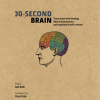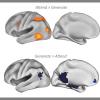News and Press Releases
Jun 19 2015 | Stanford News - Building a Brain - Step 2
The neurons in our brains use electrical activity to relay information. A reverse-engineered brain must recreate these processes, but first scientists need to understand them.
Jun 19 2015 | Stanford News - Building a Brain - Step 4
Understanding the brain's mechanics isn't enough to reverse-engineer a functional copy. What's needed is a theory of how those pieces add up to a human being.
Jun 15 2015 | Stanford Medicine - News Center
Faculty, staff, residents and a student were honored for a variety of contributions to Stanford Medicine at the medical school’s 2015 commencement.
Jun 11 2015 | Stanford Medicine - News Center
Imaging studies have delineated brain networks consisting of discrete brain regions acting in synchrony. This view of the brain’s functional architecture has now been confirmed by a study showing coordination at the genetic level as well.
Jun 9 2015 | Neuwrite West
How does the brain produce thought?
Where is memory encoded in the brain?
How do we reconstruct images in our brain?
Jun 9 2015 | Neurotalk S4E15 Tom Maniatis
Professor Tom Maniatis, Professor of Biochemistry and Molecular Physics at Columbia University speaks about the diversity of protocadherins, the ethics of CRISPR/Cas9, and his many scientific friendships.
Jun 4 2015 | Neuwrite West
“What are the adult brain mechanisms at work when playing the children’s game “Concentration” (memory card game)? This game is beneficial for all ages, but what’s the brain science behind it and how do adults benefit from playing it?”
— Adrianne
Jun 3 2015 | Stanford Report
Real-time brain scans coupled with a machine-learning algorithm can reveal whether a person has memory of a particular subject. Now, Anthony Wagner and other scientists at Stanford have shown that, with a little bit of concentration, people can easily hide their memories from the computer.
Jun 2 2015 | Stanford Medicine - News Center
Carla Shatz has uncovered mechanisms that the brain uses to select which connections to strengthen or prune back as brain circuits form.
Jun 1 2015 | Neurotalk S4E14: Jernej Ule
Jernej Ule, Professor of Molecular Neuroscience at University College London, speaks about an RNA-binding protein called Nova.













